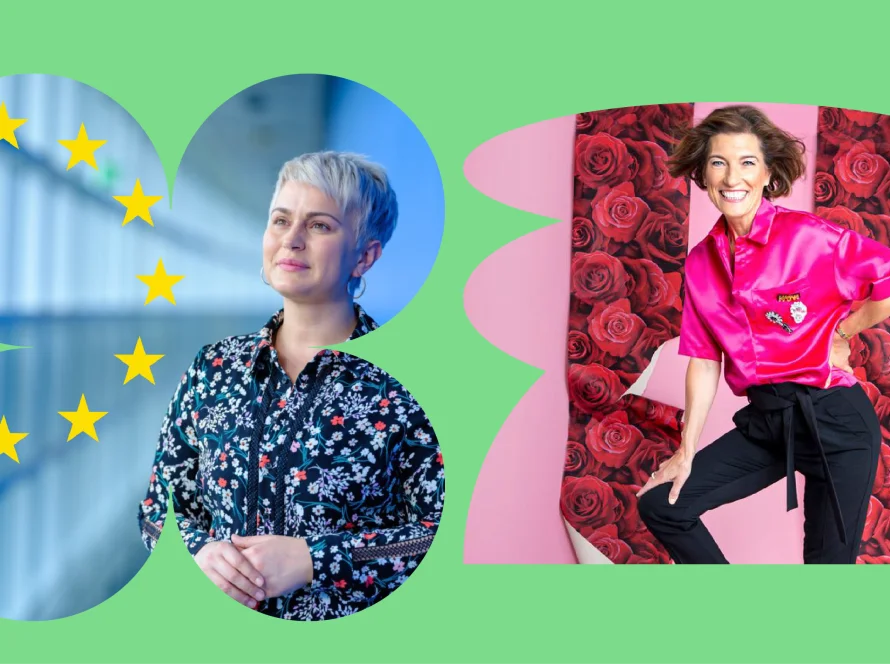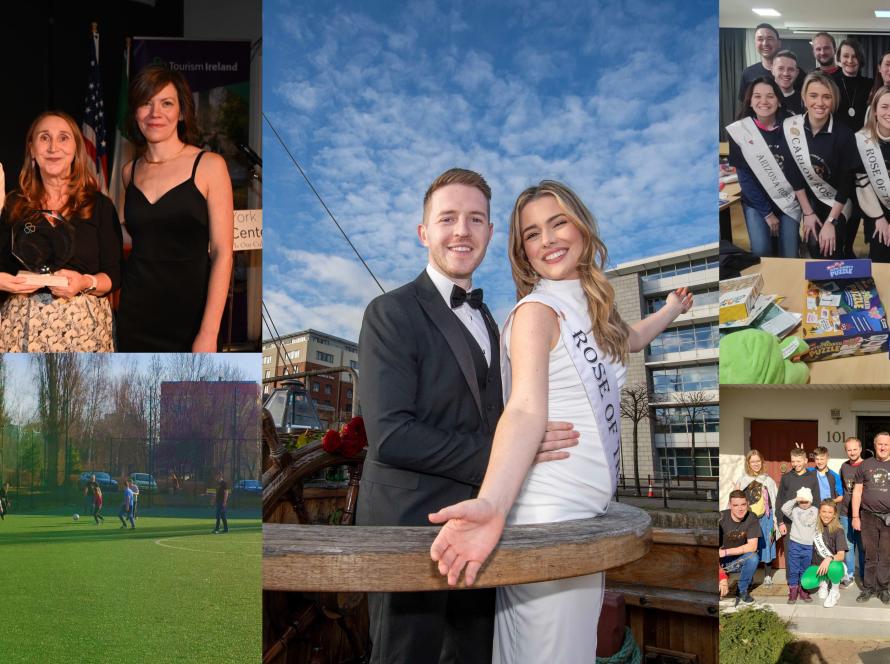The Rose of Tralee International Festival marked 60 years in 2019, and has gone from strength-to-strength since. The Festival is a celebration of Irish culture and heritage held every year during the month of August. The five day festival culminates in the crowning of the Rose of Tralee, a year long ambassadorial role for this young Irish woman who represents Ireland the Festival both locally and around the world.
The Rose of Tralee Festival is supported by over 60 Rose Centres globally, in Ireland, the UK, Europe, the Middle East, America, Canada, Australia and New Zealand. Each Centre sends a representative, a Rose, to the Festival. The Roses participate in Festival events, Rose parades and the two nights of live television broadcast to the nation by RTE. The second night’s TV show culminates in the announcement of the Rose of Tralee and is one of the country’s most watched TV programmes.
The Festival also includes five days and nights of entertainment, much of which is free. This includes live music (concert style on our big Denny Street stage, the Rose Dome, and in town centre pubs), Family Town for kids and kidults, three Rose parades, two huge firework displays, historical exhibitions, talks and day trips, a Gala Rose Ball and the televised live Rose of Tralee show to which tickets are available to the public to be part of the audience in the Rose Dome.
How it all Started
An Tóstal was a series of festivals around the country launched in 1953 to celebrate all that was great and good about Irish life . From this concept emerged the inaugural Rose of Tralee Festival (or Festival of Kerry as it was then called) in 1959.
Before The Tóstal Festival was phased out in 1958 it gave inspiration to the founders of the Rose of Tralee Festival to create an event that would attract ‘Roses’ from expatriate communities.
So it was that the first Rose of Tralee Festival was held in 1959 with Rose representatives from Tralee, London, Dublin, Birmingham and New York. At the time each Rose had to be a native of Tralee, but this condition was relaxed in the early sixties to be a native of Kerry, and in 1967 “Irish birth or ancestry” became the criterion.
The First Festival
The first Festival in 1959 cost just IR£750, and by 1965 the budget had grown to IR£10,000. The 1959 Festival was a resounding success with Alice O’Sullivan from Dublin becoming its first Rose. The organisers extended their sights to include setting up Rose Centres in other areas, beginning with the United States. As well as Ireland, the UK and the US, the Festival now has centres in Canada, Australia, New Zealand, the Middle East, and Europe.
The original proposed title of the event was the Festival of Tralee. However a member of the New York Kerrymen’s Association recommended Festival of Kerry as a title that would facilitate support by Kerry émigrés from other parts of the county. It was in the 1970s that editor of The Kerryman newspaper, Seamus McConville, suggested that the title Rose of Tralee International Festival be used to strengthen the link to the song and to reflect the growth of the event worldwide.
The First Rose Dome
The first Rose Selection took place at a dance. After a few years it moved to the Ashe Memorial Hall in Tralee town centre (then used as a cinema) with seating for 680 people. By 1972 it was obvious that the demand for tickets far outstripped capacity. The International Eisteddfod in Wales used a large marquee-like structure and this became the model for the Rose of Tralee Festival Dome which first appeared in 1973 at a cost exceeding £17,500 (the total Festival budget for 1972). Irish folk singer Johnny McEvoy topped the bill on the Dome’s opening night. The original Dome was destroyed in a storm on the last day of the 1983 festival.
Did you know the original Street Lighting was from Blackpool Illuminations?
The town’s impressive street lighting put up especially each year for the Festival was first introduced in the early sixties. Pieces were brought from the Blackpool Illuminations, which gives an idea of the extent and impact of the display. The streets of Tralee were bathed in coloured windmills, lighted clowns, floral arrangements and rockets all surplus to Blackpool requirements and restored by ESB electricians.
The ESB was the first company to install extensive lighting and moving parts on a float (others involved a cable trailing from the car in front to run a few spotlights). One of the most spectacular floats ever built was an ESB helicopter with flashing lights and revolving rotor blades with Roses sitting in the cabin.
The First Rose Parades
Decorative floats for the parade were introduced in 1967. The first float incorporated a background based on a scallop shell, until a couple of days before the festival somebody realised that the design was very similar to a global oil company’s logo and the float had to be changed. Initially floats were floral and countless hours were spent decorating them with hundreds of thousands of artificial flowers.
The streets have always reverberated with entertainers, music and big name live rock bands, including Westlife, Gabrielle, James Brown, Inxs, James Last and Phil Coulter, but began with folk groups, American school choirs and pop bands. In the early sixties a group from Dublin, The Harmonichords, played on the streets for an all-in fee of IR£5. They enjoyed themselves so much they returned from Dublin the following night for another fiver. They later became known as The Bachelors.
The Tavern in Tralee was a popular pub in the early sixties for ballad groups. A Canadian TV Crew were in Killarney and came to Tralee to film some of the Festival. Directed to The Tavern, they filmed the group performing and their subsequent programme was shown across Canada. The fledgling ballad group? The Wolfe Tones.
The First Televised Rose Event
The Gala International Rose Ball was introduced in the seventies, as was the involvement of Irish Cultural Organisations including Siamsa Tíre, the band of An Garda Siochána and US military bands.
Telefís Éireann first broadcast Rose Selection live in 1967 from a stage outside the Ashe Memorial Hall. Compere for TV was the late Joe Lynch (Dinny from RTÉ TV soap Glenroe). The show also featured a major parade of entertainers in front of the stage.
Rose Selection has been compered by Kevin Hilton, Joe Lynch, Terry Wogan, Brendan O’Reilly (RTÉ sports), Michael Twomey (‘Cha & Miah’), Gay Byrne, Kathleen Watkins, Derek Davis, Marty Whelan, Ryan Tubridy and Ray D’Arcy.
Did you Know?
The London Rose Centre is the only centre to have two winners in successive years with Charmaine Kenny (2009) and Clare Kambamettu (2010). Dublin has won the contest more often than any other Centre – five times – beginning with Alice O’Sullivan in 1959, Ciara O’Sullivan (1962), Cathy Quinn (1969), Sinéad Boyle (1989) and Orla Tobin (2003).
Two gentlemen who were Rose Escorts have attained a measure of fame outside their Festival roles. Former Dublin Lord Mayor Royston Brady and Bull Island’s Alan Shortt were both Rose Escorts. Alan Shortt got his first break as a comedian when Gay Byrne brought him on stage during Rose Selection to tell a few jokes.
There is an actual rose named The Rose of Tralee. Sam McGredy was an internationally renowned Portadown rose grower who became involved with the Festival in the 1960s. He bred and registered the Rose of Tralee rose and presented rose bushes to Tralee, which still grow in the Town Park.
Since 1959 the Festival has grown, incorporating centres from all over the world and is firmly established on everyone’s events calendar. RTÉ’s live coverage of the Rose selection has helped install the Festival in the national psyche, and it has remained their top rating show for many years.-



